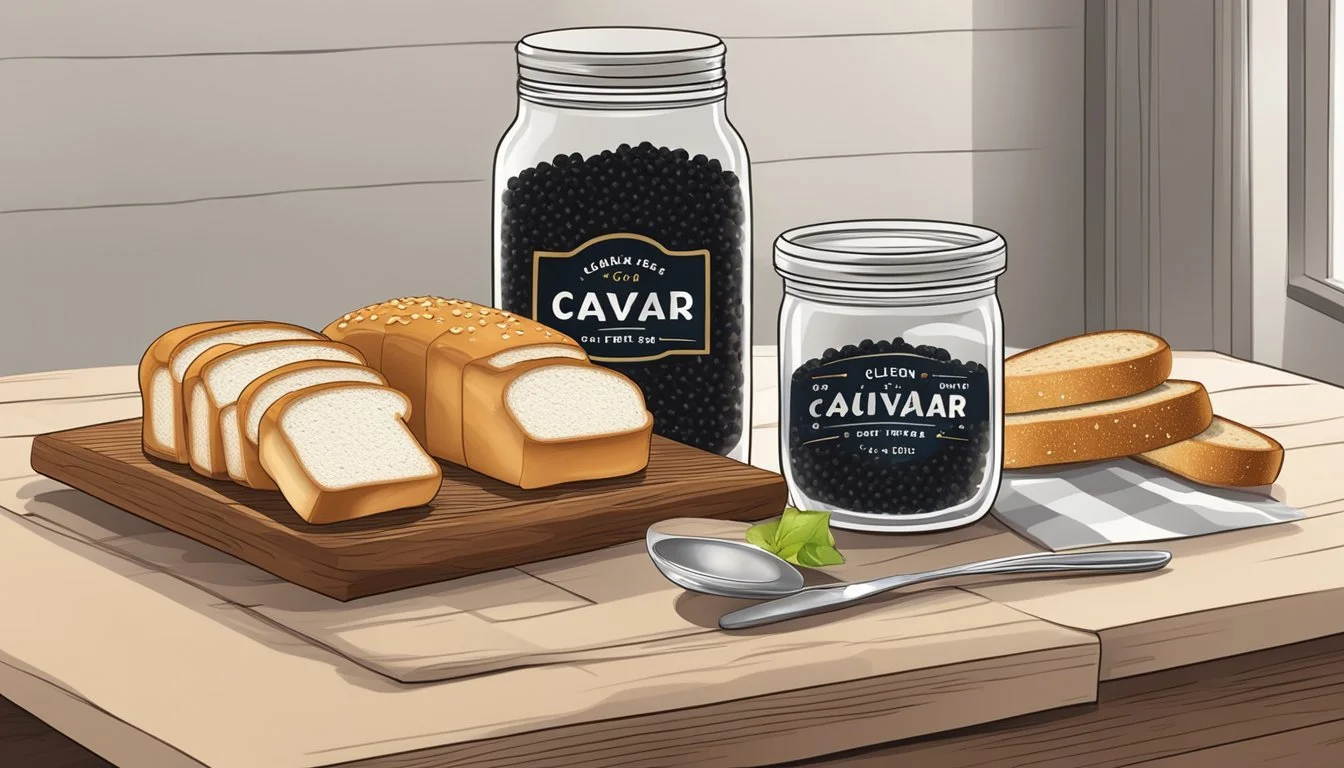Is Caviar Gluten-Free?
Unveiling the Truth for Diet-Conscious Gourmands
Caviar, the salt-cured eggs of sturgeon and other species of fish, is traditionally considered a luxury item and has been a delicacy for centuries. For individuals maintaining a gluten-free diet, whether due to celiac disease, gluten sensitivity, or personal preference, it's essential to verify the gluten content in their foods. Caviar, in its pure form, is naturally gluten-free, since it is essentially fish roe and does not contain wheat, barley, rye, or derivatives of these grains. This fact makes it suitable for a gluten-free diet.
However, when considering caviar for a gluten-free lifestyle, one should be mindful of potential cross-contamination risks or added ingredients in processed caviar products that may introduce gluten. It is not uncommon for caviar accompaniments or additives used during packaging and serving to contain gluten. Thus, for those who need to avoid gluten, scrutinizing product labels and inquiring about preparation methods when dining out is crucial to prevent inadvertent gluten consumption.
Moreover, some caviar substitutes, also known as "caviar" in the culinary world, such as vegetarian or vegan variations often called Cowboy Caviar, may contain an array of vegetables, beans, and added seasonings. These versions, while often gluten-free, may also include ingredients or dressings that contain gluten, so thorough inspection of ingredients is recommended to ensure they align with gluten-free dietary requirements. Careful selection and vigilance in checking the ingredients can help ensure that caviar remains a safe and enjoyable option for those on a gluten-free diet.
Understanding Caviar
Caviar, a prized delicacy with a unique taste and texture, is often celebrated for its nutritional values, including high protein and fat content with low carbohydrates.
Defining Caviar
Caviar is specifically the salt-cured eggs or roe from the sturgeon family of fish. It is considered a luxury food and is recognized for its fresh and rich flavor profile. Nutritionally, caviar is high in protein and fat, with minimal carbohydrates. It also contains a good amount of sodium, necessary for curing the roe.
Types of Caviar
There are several types of caviar, based on the species of sturgeon:
Beluga: Harvested from the Beluga sturgeon and is one of the most expensive kinds.
Osetra: Comes from the Osetra sturgeon, known for a nutty flavor.
Sevruga: From the Sevruga sturgeon, which is smaller, providing a more intense flavor.
Each type differs in size, flavor, color, and texture, making the caviar experience quite unique to the variety one selects.
Caviar Harvesting Methods
Roe for caviar is harvested using different methods:
Traditional Russian Method: Involves extracting the eggs surgically and then curing them.
No-Kill Method: A more humane approach where eggs are massaged out of the fish, allowing it to continue living.
Freshness is paramount in caviar, so it must be processed shortly after harvesting and kept cold at all times until served to maintain its delicate taste.
Gluten Basics
In this section, the reader will learn about the fundamental nature of gluten, commonly encountered gluten-containing grains, and strategies to identify gluten in various foods. This information is particularly valuable for individuals following a gluten-free diet.
What is Gluten?
Gluten refers to a group of proteins found in certain grains. It acts as a binding agent, giving dough its elasticity and bread its chewy texture. For those on a gluten-free diet, it is essential to understand that gluten can trigger health issues for individuals with celiac disease or gluten sensitivity.
Sources of Gluten
Gluten is predominantly found in grains such as:
Wheat (including varieties like spelt, kamut, farro, and durum, and products such as bulgur and semolina)
Barley
Rye
These grains are common in foods like bread, pasta, cereals, and baked goods. It is also good to know that while oats are naturally gluten-free, they can be contaminated with gluten if processed in facilities that also process gluten-containing grains.
Identifying Gluten in Foods
Identifying gluten in foods requires diligent label reading. The FDA mandates that foods labeled “gluten-free” must meet strict criteria. However, some products may use terms like "no gluten-containing ingredients" which does not equate to being certified gluten-free. Here are steps to identify gluten in foods:
Look for labels stating "gluten-free."
Be cautious of products that only claim "no gluten-containing ingredients."
Verify the ingredients list for any hidden sources of gluten.
Take note that some products might be cross-contaminated with gluten during production.
For a safe gluten-free diet, one must be vigilant in checking food labels and knowledgeable about the various names and sources of gluten.
Caviar and Gluten Content
In examining whether caviar is suitable for gluten-free diets, one must differentiate between pure caviar and caviar-containing dishes, considering both the inherent gluten content and potential for cross-contamination.
Is Caviar Gluten-Free?
Caviar, which consists of salt-cured fish eggs, is inherently gluten-free. It naturally contains no wheat, barley, rye, or their derivatives, making it safe for individuals with celiac disease or those following a gluten-free diet.
Potential Cross-Contamination
In Restaurants: Caviar served in restaurants may be at risk of cross-contamination with gluten-containing foods through shared utensils or preparation areas.
At Home: When preparing dishes like cowboy caviar at home, one must ensure all added ingredients are gluten-free and that preparation surfaces and tools are free from gluten residues.
Gluten-Free Certification for Caviar
For those requiring stringent gluten-free standards, particularly individuals with celiac disease, seeking out caviar with a gluten-free certification can provide an added layer of assurance. This certification confirms that the caviar has undergone testing to validate its absence of gluten below the threshold considered safe for celiac patients.
Health Benefits of Caviar
Caviar is recognized for its rich nutritional profile, which provides an array of health benefits. It's incorporated into diets often for both its opulent flavor and its dense nutrient content.
Nutritional Profile of Caviar
A single serving of caviar packs a significant amount of nutrients, particularly:
Vitamins: Caviar is an excellent source of Vitamin B12, essential for maintaining healthy nerve cells and aiding in the production of DNA. Other vitamins present include Vitamin A, which is crucial for good vision and immune function, and Vitamin E, known for its antioxidant properties.
Minerals: It contains minerals like iron, which is vital for the transport of oxygen in the blood; selenium, which plays a role in antioxidant defense; and magnesium, important for muscle and nerve function.
Furthermore, caviar's nutritional breakdown includes:
Protein: High-quality protein that is easily digestible and contains all the essential amino acids.
Fatty Acids: It is rich in Omega-3 fatty acids, particularly DHA and EPA, which contribute to heart health, cognitive function, and anti-inflammatory processes.
Fat: The fat content in caviar is mostly the healthy unsaturated kind, including monounsaturated and polyunsaturated fats.
Caviar in a Balanced Diet
Incorporating caviar into a balanced diet can offer several benefits due to its nutrient density:
Heart Health: The Omega-3 fatty acids in caviar can help reduce the risk of heart disease, lower blood pressure, and decrease triglyceride levels.
Cognitive Function: The DHA in caviar promotes good brain health and function.
Iron Absorption: The iron content in caviar assists in preventing iron deficiency anemia, which is common in various populations.
It is worth noting that caviar can contribute to the nutritional value of a diet when consumed in moderation, complementing a diet that is varied and rich in fruits, vegetables, whole grains, and lean proteins.
Incorporating Caviar into Diet
Caviar is a versatile food that can be included in various dishes, from a simple appetizer to an elegant side dish. Adding it to one's diet offers a combination of rich taste and nutritional benefits.
Caviar Serving Suggestions
Caviar can be enjoyed in numerous ways. For a straightforward approach, one might serve it chilled on small pieces of gluten-free toast or blini. As a protein-rich ingredient, it could enhance energy levels and promote muscle growth, thus serving it alongside a light salad can balance the meal.
On toast: Serve on gluten-free toast with a dab of crème fraîche.
With eggs: Top soft-boiled or scrambled eggs for a protein-packed breakfast.
In salads: Sprinkle over a green salad for added texture and flavor.
Pairings with Caviar
Pairing caviar with foods that complement its flavor profile is important. One must consider the balance between the saltiness of the caviar and the freshness of accompaniments.
With avocado: Pair with avocado slices on gluten-free crackers for a nutrient-dense snack.
In tacos: Use as a topping for gluten-free fish tacos to add a salty, rich flavor note.
Side dish inspiration: Make a "Texas Caviar" by mixing beans, corn, bell pepper, and onion with caviar and seasoning with lime juice and spices for a hearty, gluten-free side.






